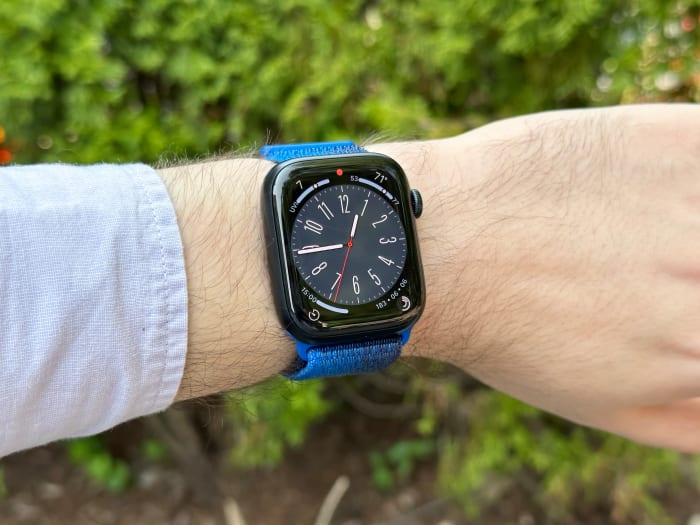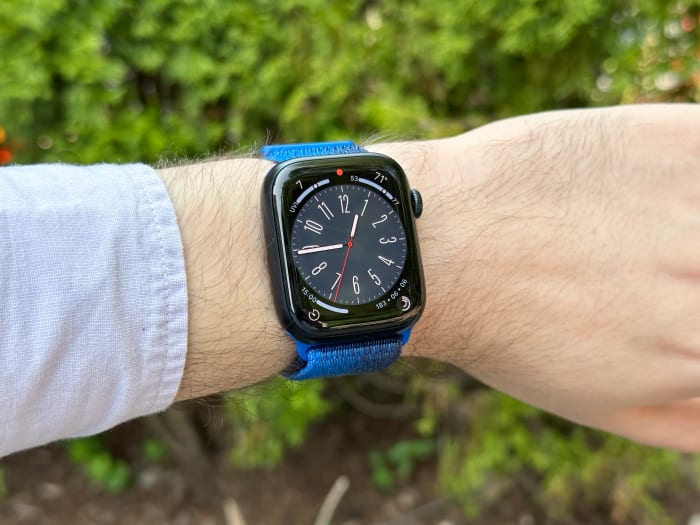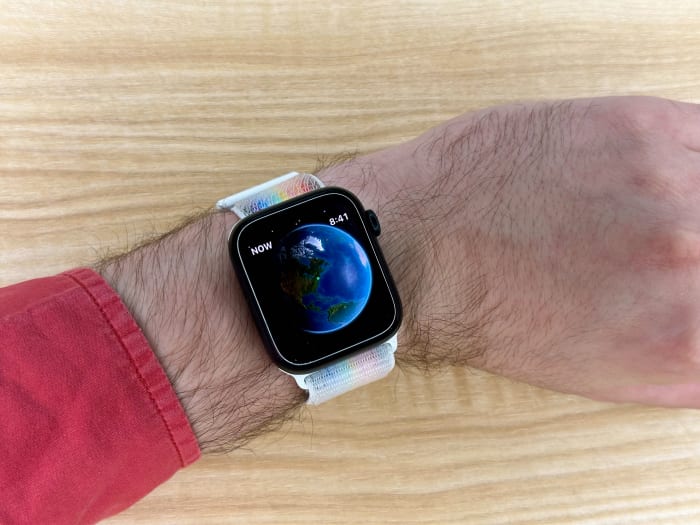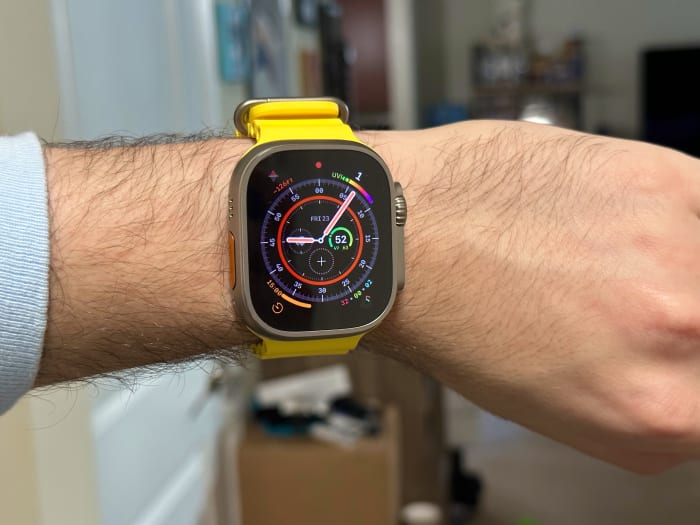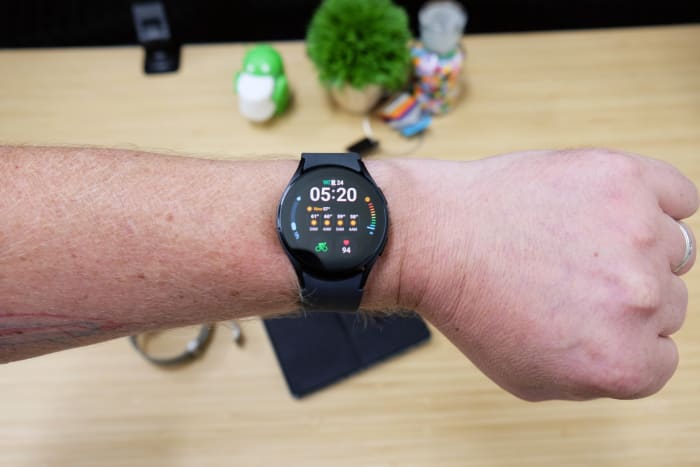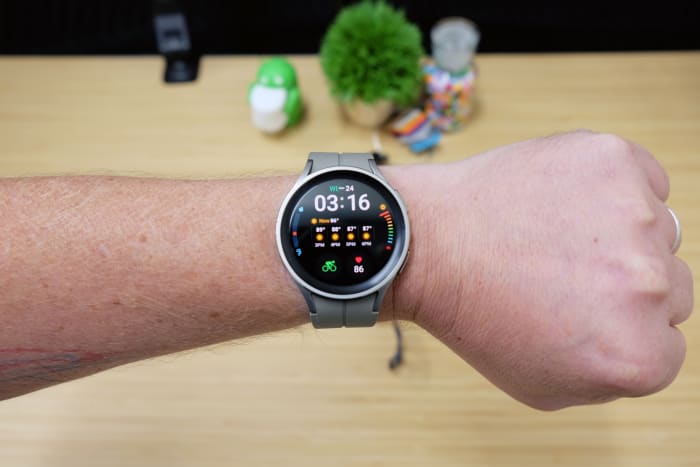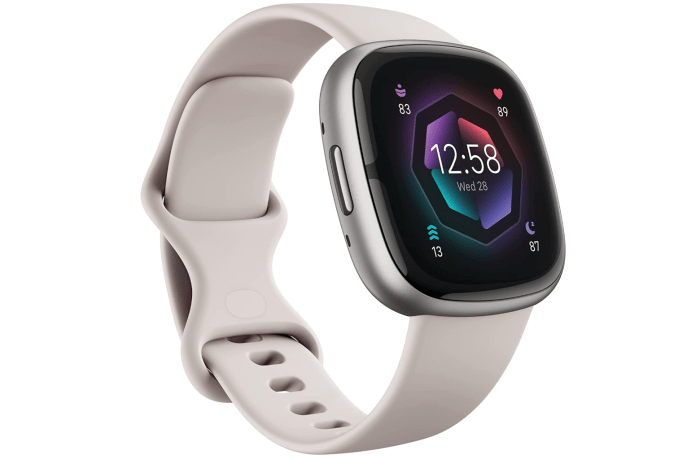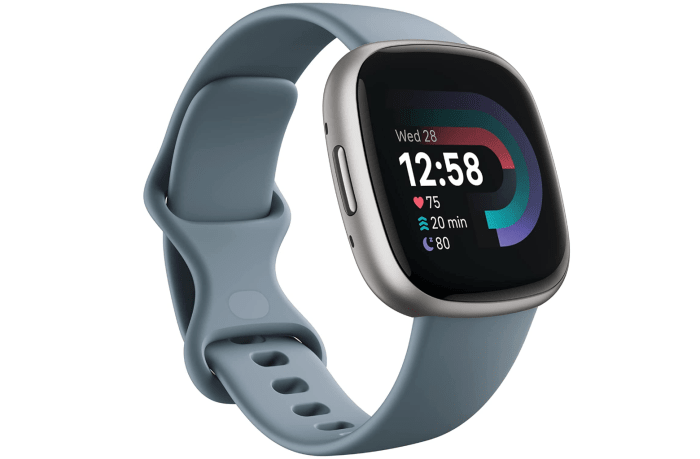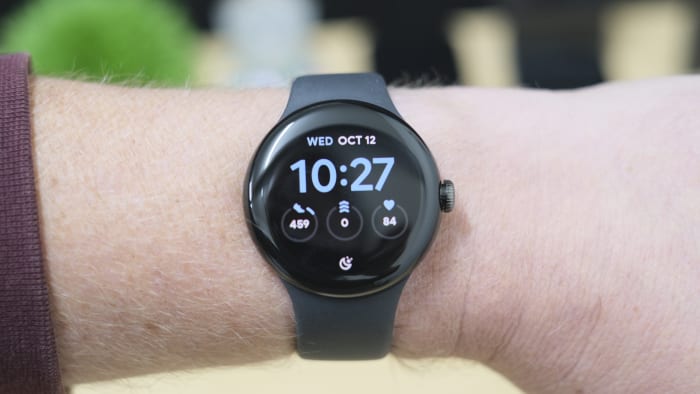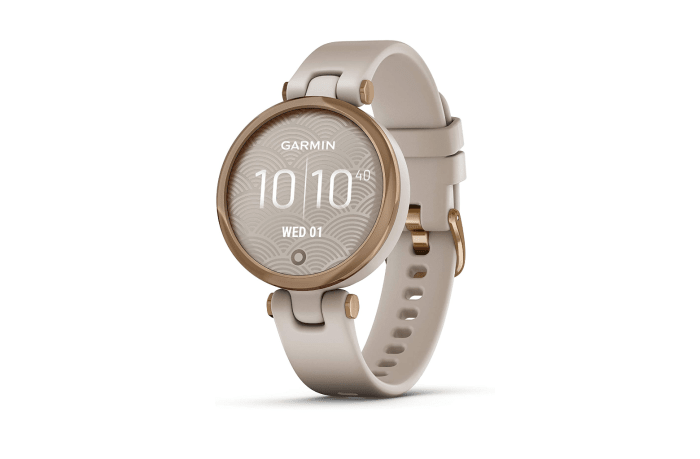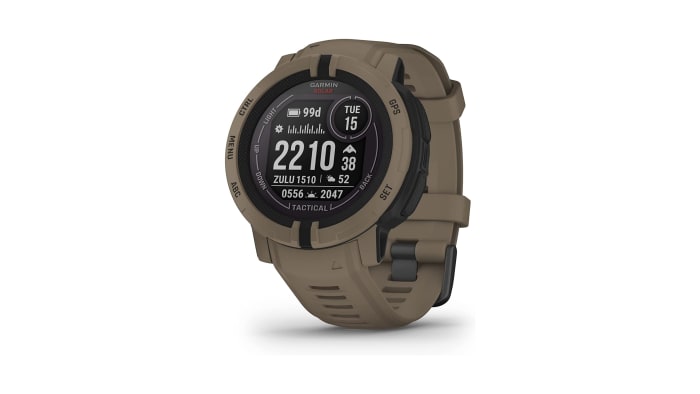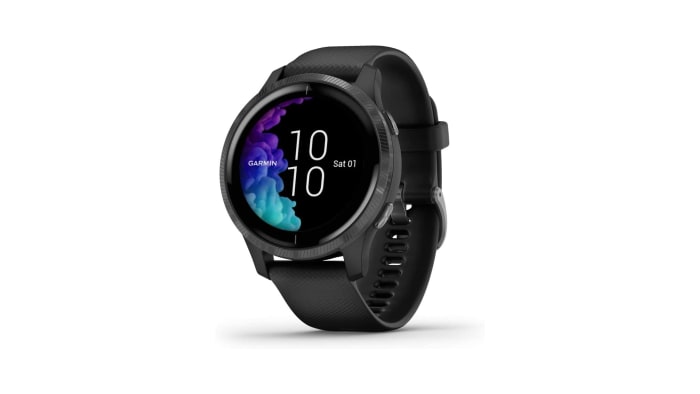Smartwatches are becoming commonplace, and as such, there are countless smartwatches available for you to choose from. Between Apple, Garmin, Fitbit, and Samsung alone there are almost too many options.
Truth be told, Apple isn’t the only company with a smartwatch that’s worth considering, especially as it’s the turn of the year and we all resolve to get healthier (and this time we mean it!).
Shopping for a smartwatch can be a confusing experience, but it doesn’t have to be. Below I break down three different product lineups from some of the most well-known smartwatch makers (including Google’s first smartwatch). Each one is made for a specific user in mind, with several different models included. With any luck, it helps you make a decision.
The Arena Media Brands, LLC and respective content providers may receive compensation for some links to products and services on this website.
Taking a Closer Look at the Apple Watch Lineup
The Apple Watch is only compatible with the iPhone, so that limits who can use one before getting into any features or capabilities. But that’s often the way things go with Apple (AAPL) – Get Free Report–you need to be inside the company’s walled garden in order to use some products.
That doesn’t mean, however, that iPhone users don’t have a choice. Fitness trackers and watches from the likes of Fitbit and Garmin work with both the iPhone and Android devices.
The main differences come down to the experience devices like the Fitbit Versa 4 or Garmin Instinct 2 provide compared to the Apple Watch.
Because Apple controls the entire experience of how the iPhone and Apple Watch interact, there are many advantages Apple Watch owners can take advantage of. For example, if you own AirPods, they automatically pair and connect to your Apple Watch so you can listen to music or podcasts while on a run or bike ride.
With an Apple Watch, you’ll be able to send and receive texts and iMessages directly on your wrist, install apps–both from Apple and third-party developers such as ESPN or Fantastical using the App Store–and have direct integration with Apple’s subscription workout platform, Fitness+.
One downside of using an Apple Watch is that it’s one more device that locks you into using an iPhone for the foreseeable future. Another potential drawback is that some people don’t like that the Apple Watch’s battery only lasts a day, meaning you’ll need to charge it once a day.
However, the Apple Watch Ultra eliminates that need with double the battery life. Apple added sleep-tracking capabilities to the watch in the last couple of years, and the Apple Watch Series 8 has fast-charging capabilities that mean you can wear it to track your sleep and then place it on the charger while you get ready in the morning.
With all of that in mind, let’s take a look at the three Apple Watch models currently in Apple’s smartwatch lineup.
Apple Watch Series 8 ($399 at Amazon)
The Apple Watch Series 8 can be considered Apple’s mainstream smartwatch. It comes in two sizes, 41mm and 45mm, with prices starting at $399 and $429, respectively. There are four different finishes to the watch’s housing for you to choose from, including Midnight, Starlight, Silver, and Product(RED). You can add cellular connectivity that allows you to leave your iPhone behind and still receive messages, alerts and phone calls for an additional $100. You can read our full review of the Apple Watch Series 8 here.
Apple Watch SE ($249 at Amazon)
Apple recently revamped the Apple Watch SE, updating its exterior, adding new colors to the mix and lowering the price to a starting point of $249. The Watch SE is best for those who don’t care about having the latest and greatest Apple has to offer, but still want a smartwatch that can put alerts on their wrist and track their health and fitness metrics. It’s equipped with hardware that will ensure it runs smoothly for several years, receiving yearly software updates at the same time as the rest of the lineup.
Prices start at $249 for the 40mm model or $279 for the 44mm model. Again, you can add cellular connectivity to the watch, bumping the price up to $299 for the 40mm version and $329 for the 44mm model. You can see our full thoughts on the second-generation Apple Watch SE here.
Apple Watch Ultra ($799 at Amazon)
The Apple Watch Ultra is the newest addition to Apple’s lineup. It also has the biggest display, the most rugged, the longest battery life, and the most expensive. There’s only one model—a $799 titanium housing with a 49mm case with cellular built-in. While it was designed with extreme sports and outdoor enthusiasts in mind, a lot of Apple Watch users (myself included) are finding it to be the best Apple Watch to date thanks to all of its features and overall size.
Taking a Closer Look at Samsung’s Galaxy Watch Lineup
Samsung has been making smartwatches for as long as anyone else in the industry, and it shows. The company’s latest Galaxy Watch 5 lineup mixes the best of what Google has to offer in Wear OS and the experience and software expertise that Samsung (SSNLF) has earned over the years.
Samsung has a handful of devices in the Watch 5 line, including the standard Watch 5 and the Watch 5 Pro. There’s also a Golf Edition that uses GPS and golf course maps to help golfers on the course. Samsung still actively sells the Galaxy Watch 4 and Watch 4 Classic, giving those interested another design option to consider.
Unlike some of Samsung’s Gear line of smartwatches that worked with iPhone and Android phones, the Galaxy Watch 4 and Watch 5 lines only work with Android phones.
Both the Watch 4 and Watch 5 put notifications on your wrist, have the ability to install apps from Google’s Play Store and have several health features.
Let’s take a look at the Galaxy Watch 5, Watch 5 Pro, Watch 4 and Watch 4 Classic.
Samsung Galaxy Watch 5 ($279 at Samsung)
The Galaxy Watch 5 comes in two different sizes and four colors, well, five if you count the Gold Edition. The circular face measures either 40mm or 44mm. The base model comes with Bluetooth connectivity, or you can add LTE for an always-on connection. The Galaxy Watch 5 can measure your body composition, has auto workout tracking, and battery life that will last you a couple of days between charges.
Samsung Galaxy Watch 5 Pro ($449 Samsung or Amazon)
Samsung’s Galaxy Watch 5 Pro is bigger and more expensive than the standard Watch 5. It has a titanium housing compared to aluminum, and a bigger battery for extended use (3 or 4 days isn’t far-fetched), along with a trackback feature for the adventurous. Outside of the bigger look and design, there’s not really a whole lot that sets the Watch 5 Pro apart from the standard Watch 5.
Samsung Galaxy Watch 4 ($169 at Samsung or Amazon)
The Galaxy Watch 4 may be a generation behind the Watch 5, but it runs the same operating system, and is slightly cheaper than the Watch 5. It even boasts the same basic features, both on the smartwatch and fitness tracker side of things. You can get it in 40mm or 44mm sizes, with or without LTE.
Samsung Galaxy Watch 4 Classic ($379 at Samsung)
Samsung’s Galaxy Watch 4 Classic is the best-looking smartwatch Samsung has ever built. There. I said it. Surrounding the 42mm or 46mm screen is a bezel that physically rotates to help you navigate the interface while you’re reading your latest workout stats, fitness info or text and email notifications. Like the Watch 4, the Classic is indeed a generation old at this point, but it uses the same operating system as the Watch 5 models, providing the same experience but on a better-looking watch. Yes, I just doubled down.
Taking a Closer Look at Fitbit’s Lineup
Fitbit is rightfully a household name when it comes to activity trackers and by extension smartwatches. The company pioneered the wearable market with its small step counters that have now expanded well beyond the small gadgets you clipped onto your hip.
Fitbit’s lineup spans several different devices with different designs and use cases. Fitbit’s entire lineup will work with the iPhone or Android phones, with similar features across both platforms.
Every Fitbit (FIT) – Get Free Report, be it a smartwatch or tracker, offers several days of battery life, integration with Fitbit’s workout platform (Fitbit premium), step counting, sleep tracking, activity minutes and heart rate tracking.
With the exception of the Pixel Watch, a common complaint about Fitbit’s approach is the lack of high-quality third-party apps and services. Fitbit has its own app and watch face storefronts within the Fitbit app, but it hasn’t seen mass adoption by developers. Instead, you’ll have to rely on getting alerts from your smartphone pushed to the watch as a way to keep up to date.
Instead of breaking down each Fitbit model (there are many), let’s take a look at just the smartwatches in Fitbit’s lineup, including the Sense 2, Versa 4 and the recently launched Google Pixel Watch.
Fitbit Sense 2 ($229.95, originally $299.95 at Amazon)
The Fitbit Sense 2 is loaded with various health sensors that go beyond measuring the staple fitness metrics we’ve grown to expect from all wearables. For instance, the Sense 2 can detect electrodermal activity that is used as an indicator of your stress level. There’s also an ECG app that can detect atrial fibrillation and a temperature sensor that measures your skin temp to track trends over time.
Fitbit Versa 4 ($179.95, originally $229.95 at Amazon)
The Versa 4 looks similar to the Sense 2 when it comes to design, but it lacks some of the more sophisticated sensors found in the more expensive Sense 2. With the Versa 4 you’re getting a fitness and activity tracking device in a smartwatch form factor. It boasts Sp02 tracking, heart rate monitoring, skin temperature measurements and more.
Google Pixel Watch ($319, originally $349.99 at Amazon)
Fitbit is owned by Google (GOOGL) – Get Free Report, and as such, the Android maker relied heavily on Fitbit to help create Google’s first smartwatch, the Pixel Watch. The Android-only watch uses all of Fitbit’s fitness tracking prowess, combined with Google’s Wear OS platform for the smartwatch portion of the device.
I reviewed the Pixel Watch early on and found it to be a promising first-generation watch from Google. You can read the full review here.
Taking a Closer Look at Garmin’s Smartwatch Lineup
Garmin’s smartwatch lineup is full of options ranging from a more traditional smartwatch design and capabilities, to a rugged watch that has a miniature solar panel embedded under the display that can be used to passively charge the watch while you explore the outdoors.
Traditionally, Garmin’s fitness devices have been a hit with hardcore runners and outdoor enthusiasts. The watches work with either Android phones or the iPhone, and span a wide range of different use cases.
Ahead I’m breaking out three options but Garmin (GRMN) – Get Free Report has a few more smartwatches, each of which with a different design and approach. At the end of the day, they all serve the same primary purpose–track your daily activity, stress level, and sleep.
Again, Garmin’s approach is one that’s mostly been for fitness-focused users and not someone who wants a watch that’s smart. Using the watches will require a learning curve that’s arguably steeper than what you’ll go through with a Fitbit or Apple Watch.
That said, if you’re a fitness buff that wants as much information as possible about your body and daily activity, and capabilities like advanced location tracking or solar charging, then Garmin is where it’s at for you.
Garmin Lily ($189.99, originally $249.99 at Amazon)
Garmin’s $249 Lily smartwatch is smaller, more stylish and designed for women. It tracks all of the standard fitness metrics, including stress, women’s health, hydration, sleep and heart rate.
It’s currently available in gold, purple, and white gold.
Garmin Instinct 2 Solar ($499 at Amazon)
The Instinct 2 Solar, Tactical Edition is one of the more rugged smartwatches I’ve seen. It’s built to withstand a beating, has three different location tracking technologies built into it for improved accuracy, and the screen doubles as a solar panel to keep it charged while you’re outside.
Garmin Venu 2 ($199.99, originally $349.99 at Amazon)
The Venu 2 looks more like a traditional watch that tracks your workouts, syncs with Spotify and puts your smartphone notifications directly on your wrist (just like the rest of Garmins’ offerings). It also has 11 days of battery life.
Which Smartwatch Is Right for you?
Most of this can be distilled down into this:
If you have an iPhone, the Apple Watch is going to provide the best overall smartwatch experience.
Samsung’s lineup is often considered the best for Android users, and for good reason.
Fitbit’s product lineup does a fantastic job of tracking your health metrics with some unique features, but its software can be a frustration point.
Garmin, on the other, er, wrist, is arguably the best fit for fitness enthusiasts. Heck, the watches have a way to measure your body’s battery and tell you how much energy you have left for the day. It’s crazy.
Prices are accurate and items in stock at time of publishing.
Author Profile
- "Lean Right" Bias Rating
- TheStreet is a financial news and financial literacy website. It is a subsidiary of The Arena Group. The company provides both free content and subscription services such as Action Alerts Plus a stock recommendation portfolio co-managed by Bob Lang and Chris Versace.
Latest entries
 MoneyJanuary 29, 2023What Is the Internal Revenue Service (IRS)? Definition & History
MoneyJanuary 29, 2023What Is the Internal Revenue Service (IRS)? Definition & History MoneyJanuary 29, 2023How Economic Data Is Impacting the Stock Market
MoneyJanuary 29, 2023How Economic Data Is Impacting the Stock Market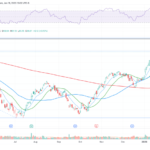 MoneyJanuary 18, 2023GE Has Been One of the Best Stocks of 2023. Can It Continue?
MoneyJanuary 18, 2023GE Has Been One of the Best Stocks of 2023. Can It Continue? MoneyJanuary 18, 2023Peloton Has a New Hope In Its Turnaround Battle
MoneyJanuary 18, 2023Peloton Has a New Hope In Its Turnaround Battle

